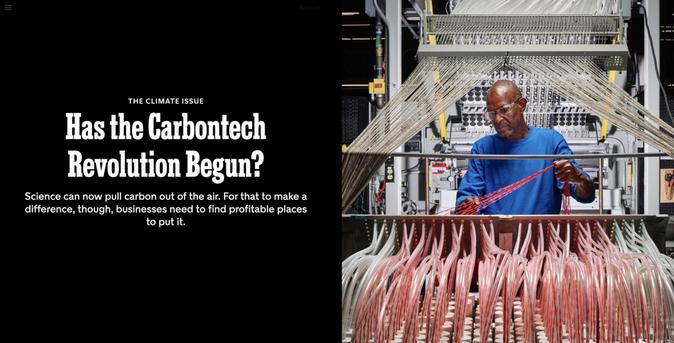To hear more audio stories from publications like The New York Times, download Audm for iPhone or Android.
You have probably set foot on Interface products. The company, based in Atlanta, makes commercial flooring — carpet tiles, lightly napped, highly durable, easily overlooked in the commercial offices and educational facilities where they are mostly in use. When Interface sent me samples of its newest product earlier this year, at a glance they seemed banal, familiar: These were the marled gray patterns that cover the floors of airport terminals, corporate hallways and CVS pharmacies all over the world. How many miles had I walked on those carpets?
Yet in their very composition, they were something new. This carpeting was a result of four years of intensive research and development, according to Interface. It incorporated a material made from recycled vinyl and processed vegetation; it was infused with a latex created from smokestack exhaust. It was topped and tufted with salvaged nylon. And it had been manufactured in the least environmentally demanding way possible. By Interface’s reckoning, the carpeting had a carbon footprint of negative 300 grams per square meter. “It’s not a magic material,” Erin Meezan, chief sustainability officer at Interface, told me recently. But the math does have a magical quality to it: In part because of how the carbon is sourced, carpeting a 10-feet-by-20-feet conference room, say, with these tiles can be seen as the equivalent of pulling roughly 12 pounds of carbon dioxide out of the atmosphere.
For decades, Interface has made most of its domestic carpets at a cluster of factories in LaGrange, Ga., about an hour southwest of Atlanta. John Bradford, its chief science-and-technology officer, led me on a tour one afternoon as he explained the company’s reconfigured manufacturing processes. “We recycle every frigging thing,” he said. His work goes far beyond recycling, however. Interface requires a detailed accounting of the company’s renewable energy sources, exhaust fumes, supply chains and waste streams. Some of the immense machinery, akin to blocklong newspaper presses, where hot sheets of vinylized carpet filler are rolled out, now runs at lower temperatures to save energy. A short distance away, a recycling center the size of several gymnasiums was crowded with rows of fabric sacks overflowing with nylon filaments, rescued from factory trimmings, ready to be turned into the face cloth for new carpet. The noise was deafening as jumbo fabric shredders, extruders, hoppers and conveyors rumbled away. Things quieted down only when we visited the company’s design center: From floor to ceiling, in aisles resembling a supermarket that sold color rather than food, were huge spools of yarn, all recycled, in every conceivable hue.





